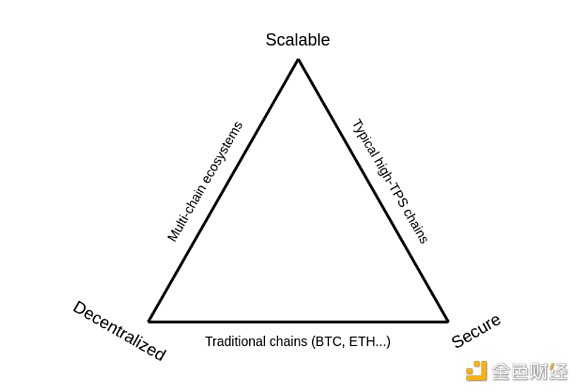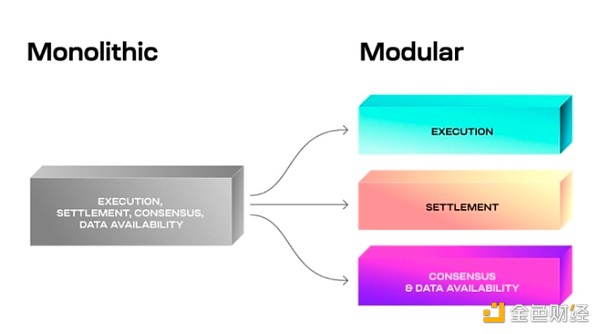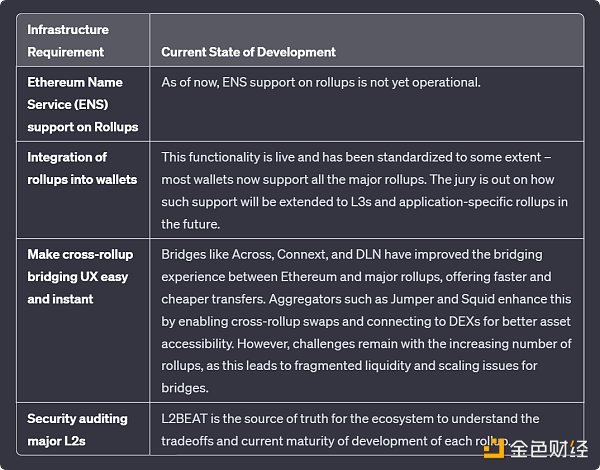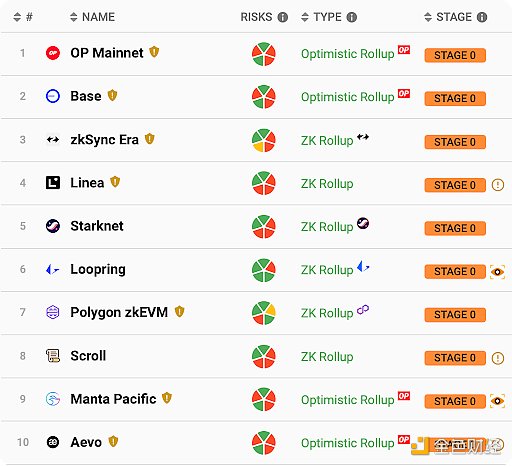Author: Arjun Chand, Bankless; Compiler: Songxue, Golden Finance
The expansion of Ethereum has always been one of the most controversial topics in the encryption field. After a long period of speculation, the community has finally finalized the Ethereum development roadmap centered on Rollup. But why did they choose this path?
With giant chains like Solana gaining momentum in their recovery, now is a good time to revisit why the Ethereum community has chosen to rely on rollup and modularity to achieve global scale.
Today’s article highlights the key arguments and developments guiding Ethereum scaling efforts toward a Rollup-centric roadmap. Let’s dive in!
Ethereum’s decentralized expansion vision
Ethereum’s ultimate goal is to become a globally coordinated financial layer. To achieve this, it must support different types of applications and be open to a variety of users.
In 2020, Vitalik highlighted a pressing problem with the Ethereum network: the $17.76 gas fee he had to pay to bet on Augur. These high fees indicate that Ethereum is struggling to scale in response to increasing demand. As a result, it became a platform "for the niche, not the global" and strayed from its original goals.
The problem is obvious. Ethereum needs to be able to process more transactions at a lower cost. However, the solution can be more complex as many factors must be considered and balanced.
A major consideration is optimizing three properties: decentralization, security, and scalability. These three together form the "three scalability problems", which are also considered to be the dilemmas of any blockchain.

Scalability three The puzzle can be thought of as a balancing act - improving one attribute often means sacrificing another.
Over time, many blockchains, nicknamed “Ethereum killers”, have been playing around with the blockchain trilemma, often sacrificing decentralization and scalability in the pursuit of scalability. Some aspects of security.
However, compromising decentralization has never been an option for the Ethereum community. This is also important because it is closely related to security and gives Ethereum properties such as network neutrality, censorship resistance, and permissionless, which are equally important properties in the scalability trilemma.
In Ethereum’s hierarchy of needs, if decentralization, security, and scalability constitute the “basic” needs, then neutrality, censorship resistance, and permissionless constitute “security” need. These two levels can be called the "basic requirements" of the Ethereum network.
In acknowledging these priorities, the Ethereum community has adopted a long-term development strategy that may sacrifice some aspects of the scalability trilemma in the short to medium term. But this allows Ethereum to “grow and grow until it’s big enough to help all of humanity.”
This strategy is called the modular blockchain theory. It involves executing transactions on layer 2 (Layer 2, L2) scaling solutions, known as rollups. Since these transactions occur outside of Ethereum, they can be faster and cheaper. However, since their data is returned to L1, they inherit Ethereum's strong security.

Why use Rollups To expand Ethereum
By the end of 2020, the Ethereum community reached a broad consensus that rollups would be the main expansion solution in the near to mid-term future, thus formulating an Ethereum roadmap centered on rollups. The key factors here that make rollups the preferred choice are:
Forward compatibility with Eth2 (PoS): Companies responsible for rollups, such as Arbitrum and Optimism, launched in 2018 and Launched in 2019. At this time, Ethereum still uses the PoW consensus mechanism, while PoS is in the proposal stage. Rollups are compatible with both PoW and PoS, giving the Ethereum developer community the timing flexibility needed for critical network upgrades, such as switching from PoW to PoS.
Technical feasibility: By 2020, rollups have achieved substantial development. As Vitalik pointed out in his forum post, Optimism rollup teams such as Optimism and Arbitrum have launched their testnets in early 2020 and released roadmaps for mainnet launches in 2021. Meanwhile, zkrollups like zkSync and Loopring are already running on mainnet and have users, albeit with limited functionality. This development gives the Ethereum community confidence in the maturity of rollup technology and its potential to effectively scale Ethereum starting in early 2021. In comparison, other scaling solutions, such as performing sharding, still take years.
During the previous bull market, the urgency of the Ethereum mainnet situation further intensified. Gas fees hit new highs, costing users tens of dollars per transaction. Additionally, some applications, especially those with non-financial use cases, were forced to shut down due to these high costs.
These factors combined have influenced the Ethereum community to become more determined to adopt rollups as a scaling strategy for the foreseeable future, recognizing their immediate impact and long-term potential.
Having said that, the immediate benefits of rollups are obvious, but the challenges of a multi-rollup ecosystem are equally obvious. The Ethereum community has raised some key concerns from a user perspective. Below is an overview of the progress we have made in addressing these issues.

Ethereum Rollup route Current status of graph
We are in a multi-rollup ecosystem, and many rollups have made significant progress.
In this ecosystem, Ethereum achieves expansion through rollups, serving as the basic layer for settlement and data availability. All rollups inherit the security of Ethereum and use it to confirm transactions and store data.
In terms of security, Ethereum is definitely one of the most secure blockchains in the ecosystem. Over 33.5 million ETH have been used to secure the network, bringing the network’s economic security to over $67 billion (at the current ETH price of $2,000).
However, with the total value locked (TVL) in the second layer (L2) having exceeded $16 billion and collateral reaching an all-time high, the community is concerned about the centralization of rollup sequence generators and operators passing The extraction of MEV raises some concerns. While some rollups have attracted considerable users, most of these systems are still in the early stages of development, as L2BEAT’s analysis of rollup maturity shows.

Another active development A key area is improving data availability. A key part of this effort is Danksharding, an important feature in the “surge” phase of the Ethereum roadmap. Danksharding aims to significantly reduce the cost of rollups to verify transactions on Ethereum, thereby promoting the network's scalability. To this end, innovative projects such as Celestia and EigenDA focus on providing cheap and decentralized data availability layers for rollups.
Before danksharding is fully implemented, the Ethereum community is working on proto-danksharding, also known as EIP-4844, as an intermediate step. This step introduces some concepts of Danksharding, such as blobs, in a simplified form. It is expected that proto-dank sharding will be implemented soon, while full dank sharding is still several years away.
Conclusion
The goal of expanding Ethereum into a global financial base layer is still far away, but we are making steady progress. The best part is that the community has agreed on a roadmap and vision, and some of the best minds are working together to make that vision a reality.
Looking ahead, the potential for thousands of specialized rollups is exciting. Each rollup satisfies a unique use case and drives innovation. This evolution will enable Ethereum to become the global financial foundation layer it aspires to be, supporting a wide variety of applications and users. All of these rollups will pay fees, have their data settled and securely stored on Ethereum, continually improving Ethereum’s cryptoeconomic security.
 JinseFinance
JinseFinance
 JinseFinance
JinseFinance JinseFinance
JinseFinance JinseFinance
JinseFinance JinseFinance
JinseFinance JinseFinance
JinseFinance Bankless
Bankless Twitter
Twitter Cointelegraph
Cointelegraph 链向资讯
链向资讯 Cointelegraph
Cointelegraph